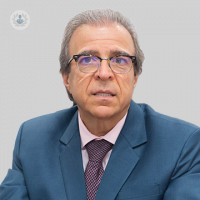La técnica Presbylasik permite corregir defectos refractivos en la cirugía de presbicia
Written by:The treatment of presbyopia with the use of the laser or also known as Presbylasik ensures the patient to eliminate his presbyopia and also correct the patient's previous refractive defects. As Dr. Dr explains. Vicente Rodríguez, expert in Ophthalmology and pioneer in the application of the Excimer laser in refractive surgery in the Canary Islands.
Over the years, patients manifest problems focusing on nearby objects. This is because after 40-45 years appears presbyopia or eyestrain .
Presbyopia surgery can be addressed by two techniques :
- One of them based on the implantation of intraocular lenses .
- The second is the use of the laser (Presbylasik).

Correction of refractive defects during presbyopia intervention
Presbylasik is a corneal refractive surgery technique that is used in presbyopia surgery or eyestrain. The main advantage of presbylasik is that without using invasive techniques and in the cornea, in addition to solving presbyopia, we will be able to correct the patient's previous refractive errors (myopia, hyperopia and astigmatism). Thus we managed to leave the patient emmetropic and without the need to use glasses.
The procedure during surgery
Those who perform this procedure perform this surgery through topical anesthesia, it is a completely painless procedure.
In it, the asphericity of the cornea will be modified, that is, the laser will carve the corneal surface to give it a certain multifocality. Thus we convert the cornea into hyperprolata and the asphericity that we are going to modify allows us to modulate the spherical aberration rate.
This allows the eye to have a depth of focus with which you can see both from a distance, as in medium distances, as up close.
Preoperative study of the patient to be treated with Presbylasik
Before performing the surgery, specialists in Ophthalmology will perform a preoperative study that determines if the patient meets the anatomical requirements to be operated on.. For this a refraction is carried out, so we know the exact number of diopters of the patient. In addition, it is determined that presbyopia added to myopia, hyperopia and astigmatism.
Next, the topography is performed to check the condition of the curvature and thickness of the cornea.
The next step is to dilate the pupil. In this way, we analyze possible differences with the refraction previously performed and study the fundus of the eye to rule out retinal pathologies.
The presbylasik allows treating patients over 40 years of their myopia to -4, hyperopia to +4 and astigmatism to -1.50. At this time a large number of patients can benefit from the Presbylasik technique.


